Eating Clean: Fit Meals Without Processed Ingredients
In today’s fast-paced world, eating clean has become more than just a trend; it’s a lifestyle.
With the overwhelming abundance of processed foods on the market, finding fit meals without processed ingredients can seem daunting.
But don’t worry—clean eating is simpler than it sounds, and it’s the key to a healthier, more vibrant life.
In this comprehensive guide, we’ll explore how to create fit meals that are free from processed ingredients, packed with nutrients, and delicious enough to satisfy even the pickiest eaters.
We’ll dive into why eating clean matters, how to identify processed foods, and provide a variety of clean meal ideas to keep your diet both interesting and nourishing.

Why Eating Clean Matters
Eating clean is all about choosing whole, natural foods over those that have been heavily processed. Processed ingredients often contain added sugars, unhealthy fats, and preservatives that can have a negative impact on your health.
These foods can contribute to weight gain, inflammation, and a host of chronic diseases, from diabetes to heart disease.
By focusing on clean meals, you’re giving your body the nutrients it needs to function optimally.
When you choose fit meals without processed ingredients, you’re not only avoiding harmful additives, but you’re also consuming more vitamins, minerals, and fiber—essential components for overall health.
Moreover, clean eating can help you maintain a healthy weight, improve digestion, and boost energy levels.

Understanding Processed Foods
Before we dive into creating fit meals, it’s essential to understand what processed foods are.
In simple terms, processed foods are those that have been altered from their natural state for convenience, shelf life, or taste.
This includes anything from canned vegetables with added salt to sugary cereals and pre-packaged snacks.
Some processed foods are easy to identify, like potato chips and cookies, but others are more deceptive.
For example, many whole-grain breads and low-fat yogurts are packed with sugars and preservatives.
When aiming for clean meals, it’s important to read labels carefully and understand what you’re really putting into your body.
Keywords to watch out for on labels include:
- Added sugars (corn syrup, fructose, dextrose)
- Hydrogenated or partially hydrogenated oils
- Artificial flavors, colors, and sweeteners
- Preservatives like sodium benzoate or BHA/BHT

How to Build Fit Meals Without Processed Ingredients
Now that you know what to avoid, let’s get into how to build fit meals that are both clean and satisfying.
The key is to focus on whole foods—those that are in their most natural state. Here’s how you can get started:
1. Focus on Whole, Unprocessed Ingredients
The foundation of any clean meal is whole foods. This means fruits, vegetables, whole grains, lean proteins, and healthy fats.
These foods are rich in nutrients and free from the additives found in processed ingredients.
For example, instead of opting for boxed mac and cheese, you could make a homemade version using whole-grain pasta, real cheese, and fresh vegetables.
Or, instead of buying flavored yogurt, choose plain Greek yogurt and add fresh fruit and a drizzle of honey for sweetness.
2. Prioritize Fresh and Seasonal Produce
Fresh, seasonal produce is at the heart of clean eating. Not only is it more flavorful, but it’s also more nutritious.
Seasonal fruits and vegetables are often grown locally, which means they spend less time in transit and can be harvested at their peak ripeness.
When planning your fit meals, think about what’s in season and build your dishes around those ingredients.
For instance, in the summer, you might create a refreshing salad with heirloom tomatoes, cucumbers, and fresh herbs. In the winter, you could roast root vegetables like sweet potatoes and carrots, pairing them with a lean protein.
3. Choose Lean Proteins
Protein is an essential part of any fit meal. However, not all proteins are created equal. When eating clean, it’s important to choose lean proteins that are free from additives and preservatives.
This includes options like chicken breast, turkey, fish, and plant-based proteins like beans, lentils, and tofu.
Avoid processed meats like sausages, deli meats, and bacon, which often contain nitrates, sodium, and other additives.
Instead, opt for fresh cuts of meat, and if possible, choose organic or grass-fed options.
4. Incorporate Whole Grains
Whole grains are a vital component of a clean diet. Unlike refined grains, which have been stripped of their nutrients during processing, whole grains retain their fiber, vitamins, and minerals.
Examples include brown rice, quinoa, oats, and whole-wheat products.
These grains can be used as the base for many fit meals. For breakfast, try a bowl of oatmeal topped with nuts and berries.
For lunch, make a quinoa salad with fresh vegetables and a light vinaigrette. Whole grains are not only nutritious but also versatile and filling.
5. Healthy Fats Are Your Friend
Despite what some fad diets might suggest, fats are an essential part of a healthy diet. However, it’s important to choose the right kinds of fats.
Healthy fats like those found in avocados, nuts, seeds, and olive oil are rich in nutrients and can help you feel full and satisfied.
When preparing clean meals, use healthy fats in moderation. Drizzle olive oil over roasted vegetables, add a handful of nuts to your salad, or enjoy a slice of avocado with your eggs.
These fats not only enhance the flavor of your meals but also provide essential fatty acids that your body needs.
6. Say No to Added Sugars
One of the biggest challenges in clean eating is avoiding added sugars. These sugars are often hidden in foods where you least expect them, like pasta sauces, salad dressings, and even bread.
Consuming too much sugar can lead to weight gain, insulin resistance, and other health issues.
When creating fit meals without processed ingredients, it’s crucial to read labels carefully and opt for products without added sugars.
If you need to sweeten a dish, use natural sweeteners like honey, maple syrup, or fresh fruit. For example, instead of a sugary cereal, make a bowl of oatmeal with fresh berries and a drizzle of honey.
7. Spice It Up with Herbs and Spices
Herbs and spices are a great way to add flavor to your clean meals without resorting to processed ingredients.
Not only do they enhance the taste of your food, but many herbs and spices also have health benefits. For instance, turmeric has anti-inflammatory properties, and garlic is known for its immune-boosting effects.
Experiment with different herbs and spices to keep your meals interesting.
Try adding fresh basil to a tomato salad, sprinkling cinnamon on your morning oatmeal, or seasoning roasted vegetables with rosemary and thyme.

Sample Fit Meals Without Processed Ingredients
To give you a head start on your clean eating journey, here are some sample fit meals that are free from processed ingredients:
Breakfast: Avocado and Egg Toast
Start your day with a nutrient-packed breakfast that’s both satisfying and delicious.
- Ingredients: Whole-grain bread, ripe avocado, eggs, salt, pepper, lemon juice, and optional red pepper flakes.
- Instructions: Toast the bread, mash the avocado with a squeeze of lemon juice, and spread it on the toast. Top with a poached or fried egg, season with salt, pepper, and red pepper flakes if desired.
Lunch: Quinoa Salad with Grilled Chicken
This hearty salad is perfect for a midday meal that keeps you energized without weighing you down.
- Ingredients: Cooked quinoa, grilled chicken breast, cherry tomatoes, cucumber, red onion, feta cheese, olive oil, lemon juice, salt, and pepper.
- Instructions: Toss the quinoa, vegetables, and feta in a bowl. Drizzle with olive oil and lemon juice, then season with salt and pepper. Top with sliced grilled chicken.
Dinner: Baked Salmon with Roasted Vegetables
A simple yet elegant dinner that’s packed with omega-3 fatty acids and antioxidants.
- Ingredients: Salmon fillets, olive oil, lemon slices, garlic, fresh dill, salt, pepper, and a mix of seasonal vegetables (like carrots, broccoli, and bell peppers).
- Instructions: Preheat the oven to 400°F (200°C). Place the salmon on a baking sheet, drizzle with olive oil, and season with salt, pepper, garlic, and dill. Arrange the vegetables around the salmon, drizzle with more olive oil, and season with salt and pepper. Bake for 20-25 minutes, until the salmon is cooked through and the vegetables are tender.

Snacks and Desserts: Clean and Delicious
Snacking is an important part of a balanced diet, and with the right choices, it can be part of your clean eating routine. Here are a few ideas for clean snacks and desserts:
1. Greek Yogurt with Fresh Berries
Choose plain Greek yogurt and top it with fresh berries and a drizzle of honey for a satisfying snack.
2. Hummus with Fresh Veggies
Pair homemade hummus with sliced cucumbers, carrots, and bell peppers for a crunchy, nutrient-packed snack.
3. Energy Balls
Make your own energy balls using oats, almond butter, honey, and your favorite add-ins like dark chocolate chips or dried fruit.

How to Maintain a Clean Eating Lifestyle
Sticking to a clean eating lifestyle can be challenging, especially with the convenience of processed foods.
However, with a little planning and commitment, it’s entirely possible to maintain fit meals without processed ingredients. Here’s how:
1. Meal Prep
Meal prepping is one of the most effective ways to ensure you stick to your clean eating goals.
Spend a few hours each week preparing meals and snacks so you always have something healthy on hand.
This can help you avoid the temptation of grabbing processed, convenience foods when you’re short on time.
2. Plan Your Meals
Before you head to the grocery store, plan your meals for the week.
This not only helps you stay on track but also makes grocery shopping more efficient. Focus on whole foods and avoid the processed aisles as much as possible.
3. Cook at Home
Cooking at home gives you complete control over what goes into your food.
This makes it easier to avoid processed ingredients and stick to your clean eating goals. Experiment with new recipes and make cooking a fun, rewarding experience.
4. Keep Healthy Snacks on Hand
Having healthy snacks readily available can help you avoid the temptation of reaching for processed options.
Stock your kitchen with fruits, nuts, seeds, and other clean snacks so you’re always prepared.
5. Stay Hydrated
Drinking plenty of water is a key part of a clean eating lifestyle.
Water helps your body function properly and can also help you feel full, reducing the temptation to snack on unhealthy foods.
6. Listen to Your Body
One of the most important aspects of clean eating is listening to your body. Eat when you’re hungry, stop when you’re full, and choose foods that make you feel good.
Clean eating isn’t about restriction; it’s about nourishing your body with the best possible ingredients.
Conclusion: Embrace the Clean Eating Lifestyle
Eating clean and creating fit meals without processed ingredients might seem like a challenge at first, but with the right mindset and tools, it becomes a natural and rewarding part of your life.
By focusing on whole, natural foods and avoiding processed ingredients, you’re setting yourself up for better health, more energy, and a happier life.
Remember, clean eating is not about perfection; it’s about making better choices most of the time.
Start small, make gradual changes, and soon you’ll find that eating clean becomes second nature.
Whether you’re cooking for yourself, your family, or hosting a dinner party, you can enjoy delicious, satisfying meals that nourish your body and soul.
FAQs
What are the best grains to include in a clean eating diet?
Whole grains like quinoa, brown rice, oats, and whole-wheat products are excellent choices for a clean eating diet. They are rich in fiber, vitamins, and minerals, which are often stripped away in processed grains.
Can I eat dairy on a clean eating plan?
Yes, but choose unprocessed dairy options like plain Greek yogurt, cheese, and milk without added sugars or artificial ingredients. If you’re lactose intolerant or vegan, opt for unsweetened plant-based alternatives.
How can I satisfy my sweet tooth without processed sugar?
Natural sweeteners like honey, maple syrup, and fresh fruits are great alternatives to processed sugars. You can use these in moderation to sweeten your meals and desserts.
Are all fats bad for clean eating?
Not at all! Healthy fats like those found in avocados, nuts, seeds, and olive oil are essential for a balanced diet. Avoid trans fats and heavily processed oils, and focus on incorporating healthy fats into your meals.
How can I make my meals more flavorful without using processed ingredients?
Herbs, spices, and fresh ingredients are your best friends when it comes to adding flavor to your clean meals. Experiment with different combinations to keep your dishes exciting and delicious.
What should I avoid when grocery shopping for clean eating?
Avoid foods with long ingredient lists, especially those that contain added sugars, artificial flavors, colors, and preservatives. Stick to whole foods that are as close to their natural state as possible.
Is it expensive to eat clean?
While some whole foods can be more expensive, there are many ways to eat clean on a budget. Buy seasonal produce, shop sales, and consider buying in bulk to save money. Planning your meals and reducing food waste can also help you stick to a budget.
References:
- Harvard T.H. Chan School of Public Health. (n.d.). The Nutrition Source: Whole Grains. Link
- Mayo Clinic. (n.d.). Clean Eating: How to Get Started. Link
- American Heart Association. (n.d.). Understanding Processed Foods. Link
- Cleveland Clinic. (n.d.). Healthy Fats: Why You Need Them and When You Should Avoid Them. Link




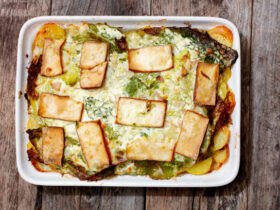
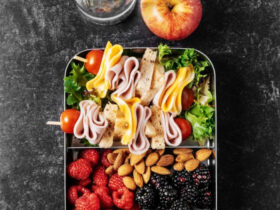

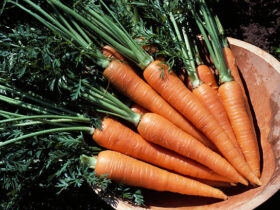
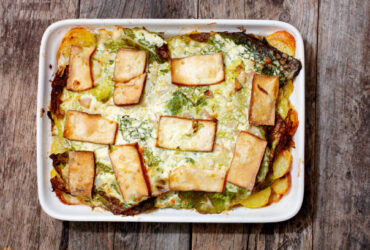
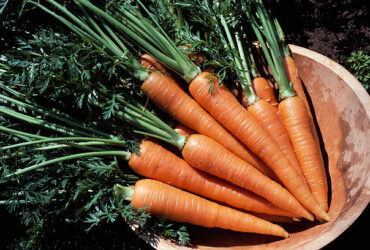

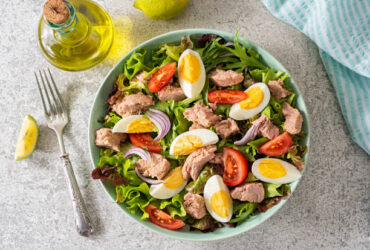
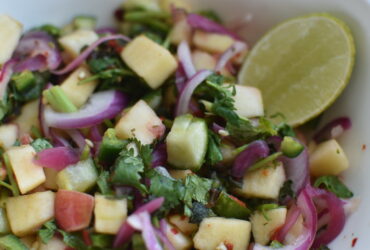


Leave a Reply